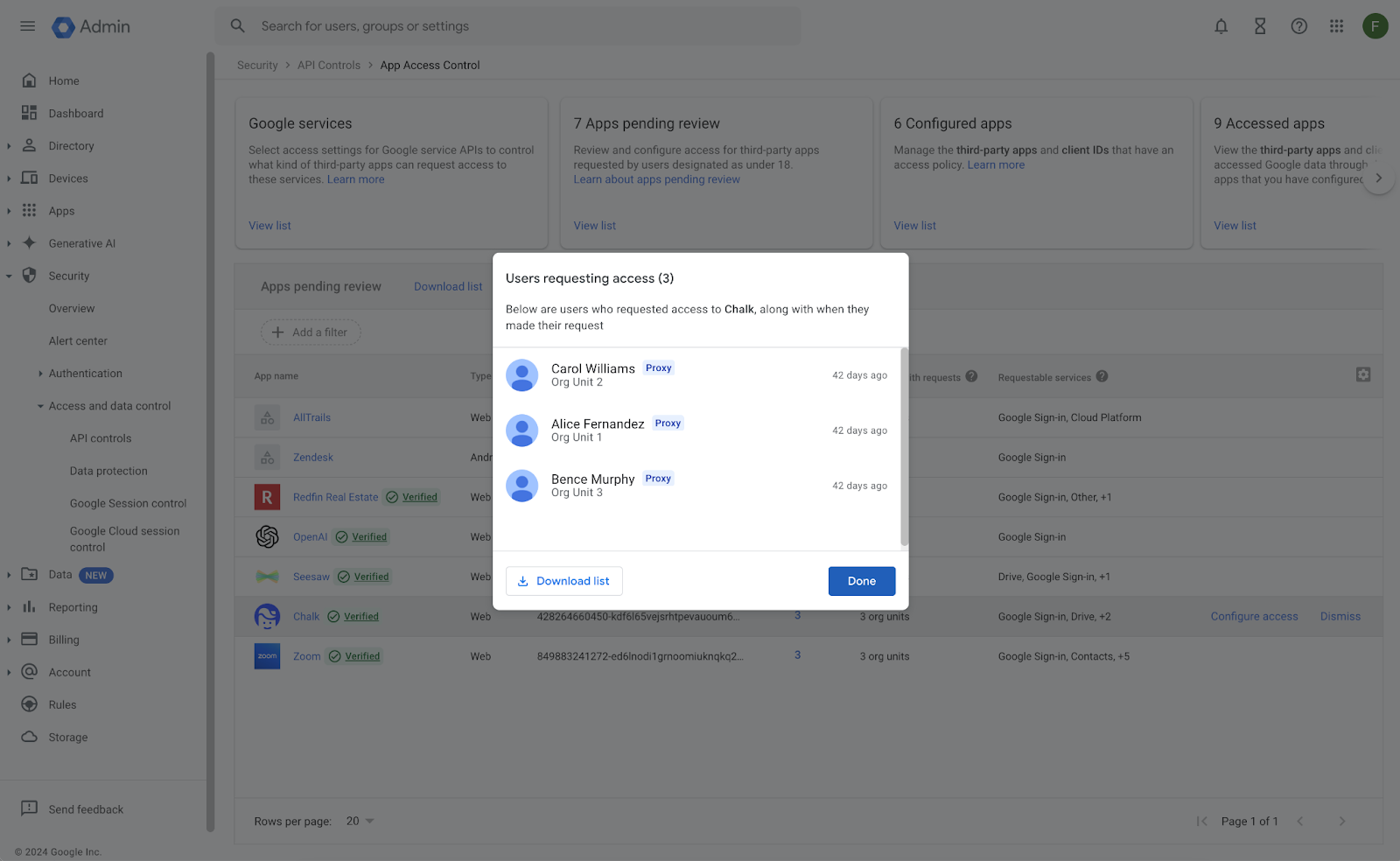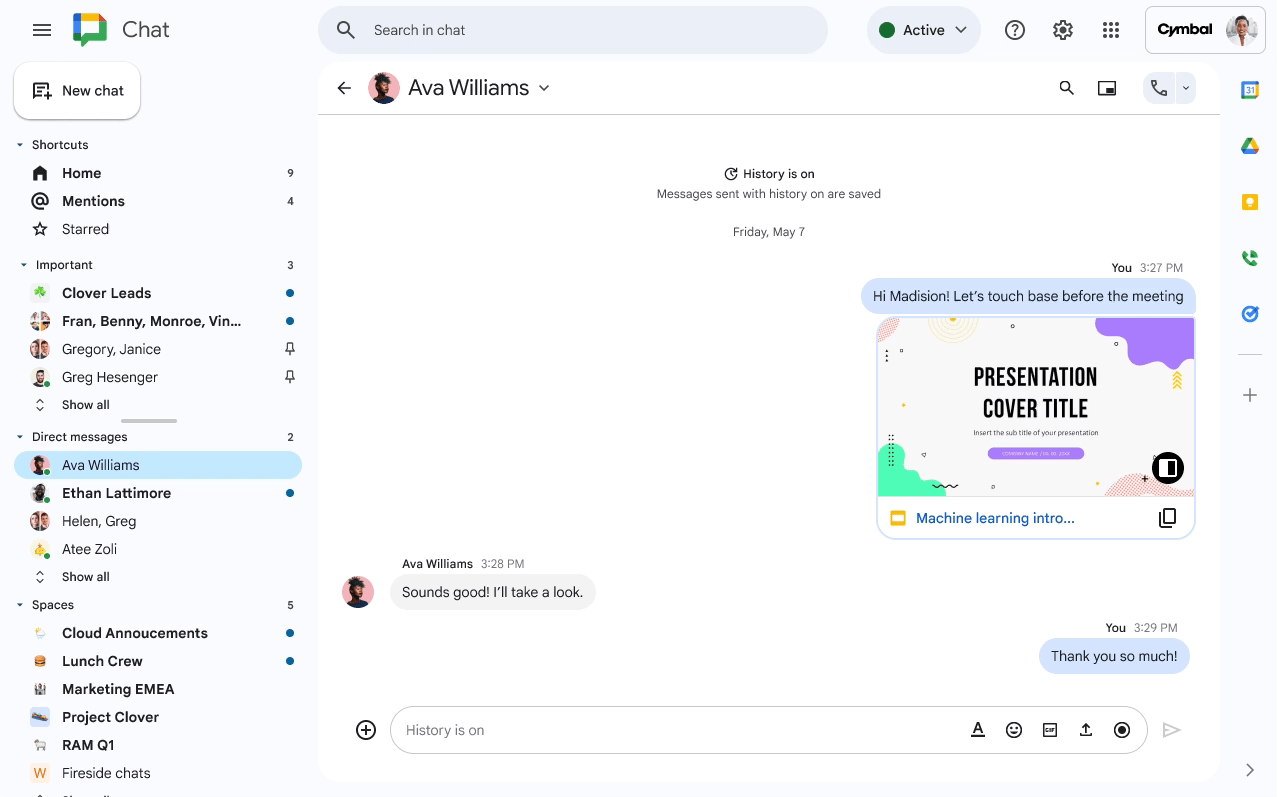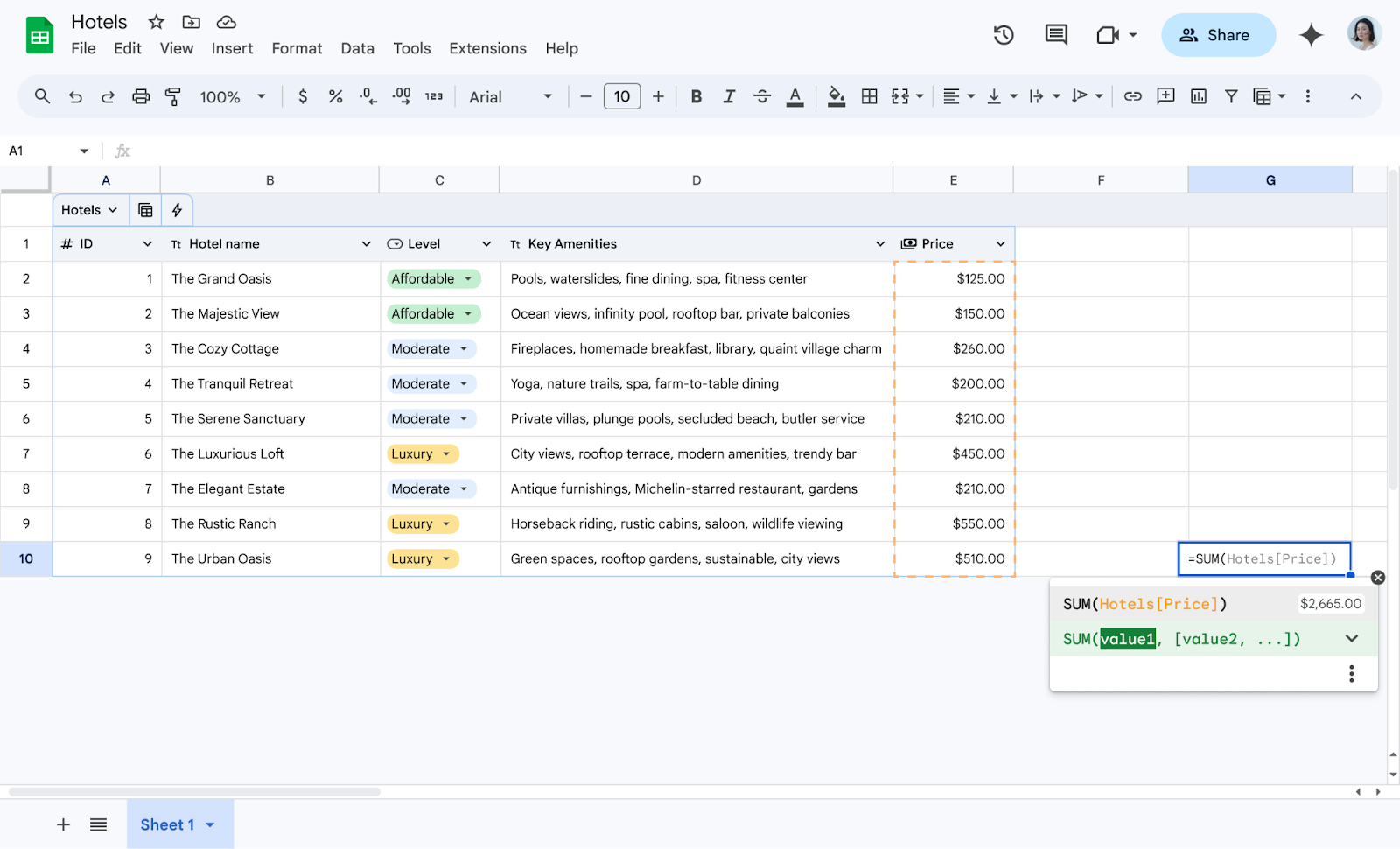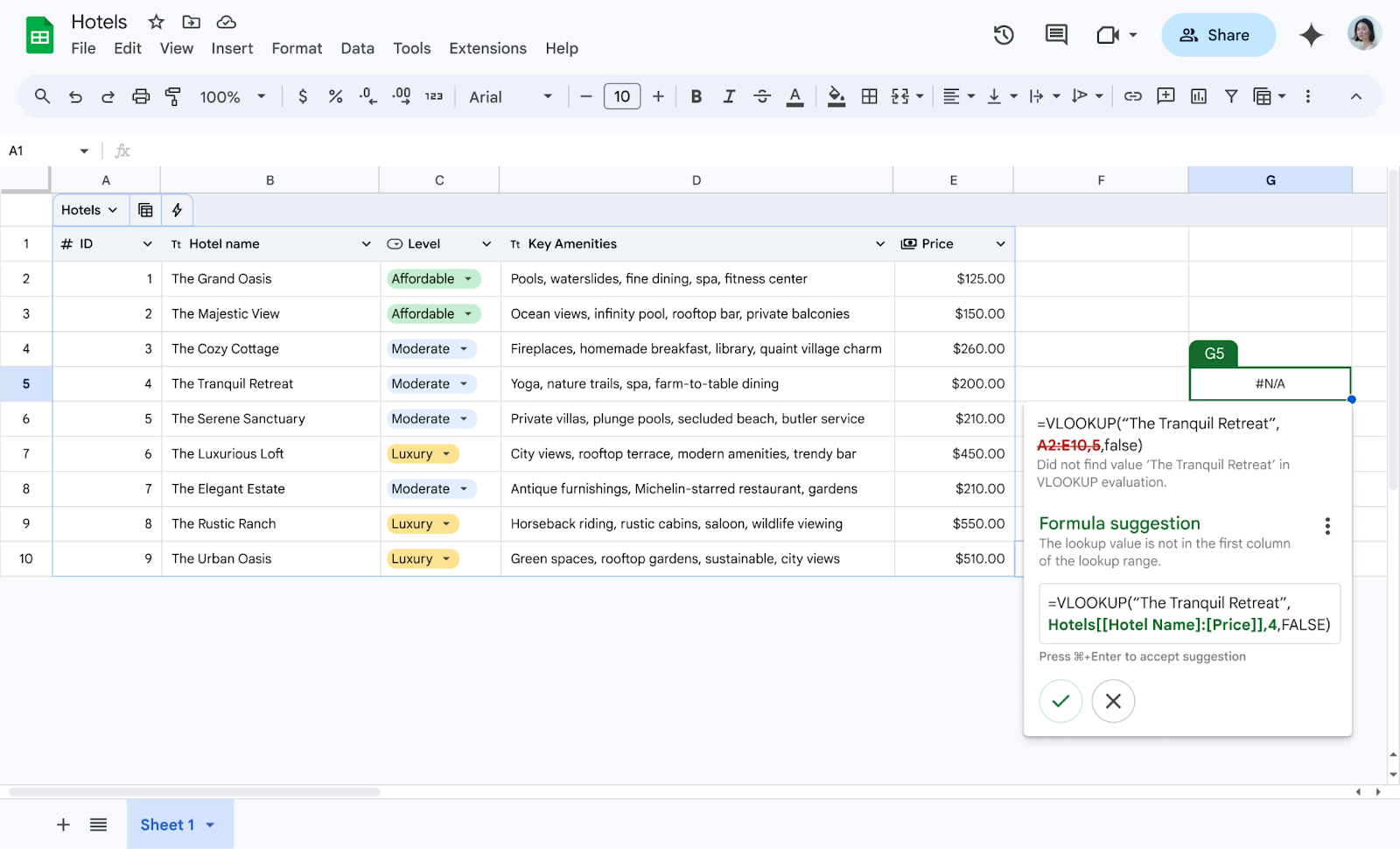von | Nov. 29, 2024 | Nachrichten
2 Neue Aktualisierungen
Sofern nicht anders angegeben, stehen die unten aufgeführten Funktionen allen Google Workspace-Kunden zur Verfügung und sind vollständig eingeführt oder werden gerade eingeführt. Die Einführung sollte nicht mehr als 15 Werktage in Anspruch nehmen, wenn die Einführung sowohl für Schnelle und planmäßige Freigabe zur gleichen Zeit. Andernfalls sollte jede Phase der Einführung nicht mehr als 15 Arbeitstage in Anspruch nehmen.
Drag and drop contacts in the addressee fields when composing an email on your Android device
When writing an email in the Gmail app on your Android device, you can now drag and drop contacts in the addressee fields. This makes it easier for you to move an email address between the “to,” “cc,” and “bcc” fields. | Rollout to
Domänen mit schneller Freigabe und Domänen mit geplanter Freigabe is complete. | Available to all Google Workspace customers, Workspace Individual Subscribers, and users with personal Google accounts.
Expanding row limits in Connected Sheets for Looker
Zu Beginn dieses Jahres, we increased the maximum number of rows of results returned from BigQuery to 100,000 for pivot tables. This week, we’re expanding this to Connected Sheets for Looker by increasing the maximum number of rows of results returned from Looker to 100,000 for pivot tables. With this update, users can analyze even more results in Sheets from the petabytes of data in Looker. | Rolling out to
Bereiche für schnelle Freigabe und planmäßige Freigabe now. | Available to all Google Workspace customers, Workspace Individual Subscribers, and users with personal Google accounts. | Visit the Help Center to learn more about
Connected Sheets for Looker.
Frühere Ankündigungen
Die folgenden Ankündigungen wurden Anfang dieser Woche im Blog Workspace Updates veröffentlicht. Die vollständigen Details finden Sie in den ursprünglichen Blogbeiträgen.
The Gemini mobile app is now available for Google Workspace users
The Gemini mobile app for Android and iOS devices is now available for Google Workspace users accessing Gemini as a core service. | Learn more about the
Gemini mobile app.
Introducing huddles: instant-on, audio-first meetings in Google Chat
In continuing our effort to make Google Chat your home for team collaboration, we’re excited to introduce a fast and flexible way to connect: huddles. Powered by Google Meet, huddles let you start an audio-first meeting, making real-time collaboration easier than ever. Once the huddle has started, you can resize or drag the window, add video, or share your screen for a fuller meeting experience while multitasking in Chat. | Learn more about
huddles in Chat.
Abgeschlossene Einführungen
Rapid Release Domains:
Rapid und Scheduled Release Domains:
von | Nov. 27, 2024 | Nachrichten
Was sich ändert
In continuing our effort to make Google Chat your home for team collaboration, we’re excited to introduce a fast and flexible way to connect: huddles.
Powered by Google Meet, huddles let you start an audio-first meeting, making real-time collaboration easier than ever. Once the huddle has started, you can resize or drag the window, add video, or share your screen for a fuller meeting experience while multitasking in Chat.
Huddles provide a seamless collaboration experience across Chat and Meet, and can be useful in a variety of scenarios, such as two colleagues syncing quickly to discuss a project they’ve been messaging about in their Chat stream.
Wer ist davon betroffen?
Endverbraucher
Warum Sie es verwenden sollten
Huddles help to reduce meeting fatigue for hybrid workers, and eliminates the need for lengthy discussions over email or in Chat. Instead of jumping out of the conversation and into a meeting, huddles integrates directly and smoothly into the Chat experience. The format of huddles also supports multi-tasking while in Chat as you can easily resize or share your screen.
Zusätzliche Details
The Meet video button that’s currently in the compose bar of Chat is moving to the Chat header, giving you multiple options such as the ability to call, start a huddle, or share a Meet link through a single entry point.
Erste Schritte
- Admins: If Meet is turned OFF for users in your domain, they will not be able to create Huddles, but they can join Huddles. Visit the Help Center to learn more about turning on Meet meetings and calls for your organization.
- Endverbraucher:
- Huddles are available in direct messages, group messages and spaces.
- To start a huddle in Chat, click the Video icon in the top right corner of your chat message > select Start a huddle.
- Huddles start audio only as default but you can turn video on at any moment.
- When you’re requested to join a huddle, you will see a chat chip in your message thread that says [user] has started a huddle, click “Join” to enter the huddle. You will also see the huddles toggle in the Chat header for that conversation.
- Besuchen Sie das Hilfezentrum und erfahren Sie mehr über huddles in Google Chat.
Tempo der Einführung
- Rapid-Release-Bereiche: Extended rollout (potentially longer than 15 days for feature visibility) starting on November 27, 2024, with expected completion by December 20, 2025
- Geplante Freigabedomänen: Gradual rollout (up to 15 days for feature visibility) starting on January 6, 2025
Verfügbarkeit
Verfügbar für Google Workspace:
- Business Starter, Standard, and Plus
- Unternehmen Starter, Standard, and Plus
- Frontline Starter and Standard
- Essentials, Enterprise Essentials, and Enterprise Essentials Plus
- Nonprofits
Ressourcen
von | Nov. 19, 2024 | Nachrichten
Was sich ändert
Since introducing
Tabellen in Google Sheets, we’ve made numerous improvements to ensure users are equipped with the tools they need to accelerate spreadsheet building.
Table references, a way to refer to a table or parts of a table in a formula, are just one example of how tables reduce time spent manually formatting data.
Today, we’re excited to announce updates to table references that enhance discoverability and usability. Specifically, users will now see:
- Improved table reference availability, which allows users to reference the items below across both single (e.g., =Table2[[#ALL],[Column 1]]) and multiple columns (e.g., =Table2[[#ALL],[Column 1]:[Column 2]] ):
- Full table columns, including column headers, data, and footers (#ALL)
- Table headers (#HEADERS)
- Table footers (#TOTALS)
- Table data, excluding headers and footers (#DATA)
- Formula suggestions, which help you identify formulas that could be more robust. For example, if a user types a working formula that overlaps with a table range, a table reference suggestion will show.
- Formula corrections for table references, which show a formula correction with a proper table reference when a formula is written incorrectly.
Erste Schritte
- Verfügbar für alle Google Workspace-Kunden, Google Workspace Individual-Abonnenten und Nutzer mit persönlichen Google-Konten
Ressourcen
von | Nov. 19, 2024 | Nachrichten
Quick summary
In 2022, we
introduced automatic framing for select Google Workspace editions. Beginning today, we’re pleased to announce that we’re expanding this functionality to all users, as well as introducing an improved experience while using a virtual background. This feature will be on by default.
Depending on their camera placement, some meeting participants might be less visible than others. With automatic framing, Google Meet will automatically center your video before joining a meeting to help ensure equal visibility for all participants. The automatic framing happens only once, so there are no motion distractions that can divert attention from the content of the meeting. Additionally, Meet will now continuously keep you centered when using a virtual background, ensuring your background is fixed and not constantly reframing which can be distracting.
Meet frames you in the center of the screen to improve your visibility
Erste Schritte
- Admins: There is no admin control for this feature.
- Endverbraucher: This feature will be ON by default and can be turned off by the user.
- Besuchen Sie das Hilfezentrum und erfahren Sie mehr über turning video framing on or off for your account. Note when no virtual background is used, you can manually reframe the video at any time by hovering over your video tile and clicking reframe.
Tempo der Einführung
Verfügbarkeit
- Verfügbar für alle Google Workspace-Kunden, Workspace-Einzelabonnenten und Nutzer mit persönlichen Google-Konten
Ressourcen
von | Nov. 19, 2024 | Nachrichten
Was sich ändert
We’re introducing a new workflow that allows educators to request access to unconfigured third-party apps on behalf of their students.
Admins can allow educators and users who are over 18 years of age to request access to apps for themselves or on behalf of others (proxy requests). For example, admins may create a group of trusted users who are responsible for vetting third party apps and allow them to make proxy requests on behalf of students.
Educators can view a list of apps they have recently accessed with their Google Workspace account and request access for their students.
Admins can review and take action on these requests in the Admin console by going to Security > API Controls > App Access Control. Requests will be denoted with a “Proxy” label when the request is made on behalf of another user.

Once admins have configured access, they can opt to notify users and/or users who made proxy requests via email about the outcome of their request.
Wer ist davon betroffen?
Admins und Endnutzer
Warum es wichtig ist
Administrators can now allow a group of trusted users to vet and request third party app access on behalf of other users. This allows admins to better control who requests access and create a more streamlined process for app approvals.
Tempo der Einführung
Verfügbarkeit
- Available for Google Workspace Education Fundamentals, Standard, Plus, and the Teaching & Learning Upgrade
Ressourcen






.gif)



